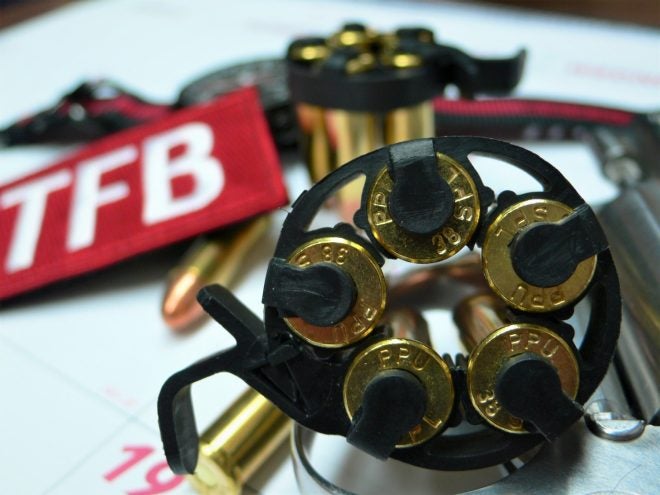In early November, I posted about a new revolver speedloader called the Ripcord, manufactured by CK Tactical Inc. To my knowledge, the Ripcord is the only “pull-tab speedloader” currently on the market, but the mechanics to use it are similar to previous examples I wrote about here. CK Tactical was nice enough to send me a couple 5 and 6 shot models to test. In the comments section of the Ripcord Speedloader product announcement, several concerns were raised and I set out to find the answers as well as put them to the test on the range.
As a quick refresher, the loaded Ripcord is inserted into an empty revolver cylinder much like a traditional Safariland or HKS speedloader, but instead of turning a knob or pushing the loader to release the cartridges, you need to pull the tab away from the revolver, letting the cylinder spin as you pull. This forces the individual cartridges to be released from the Ripcord and drop freely into the chambers. CK Tactical’s YouTube video showing the suggested techniques can be seen below.
One of the concerns mentioned was that if the Ripcord were pulled with too much force, you could bend the crane and put the revolver out of action. I’ll freely admit that I’m not a machinist or a metallurgist, but after applying slight outward pressure to all of the revolvers at my disposal (most of them J frame sized), I thought them solid enough to try some reloading. The overall flexible design seemed to help ease my thoughts about potential misalignment of the crane once I started “ripping” in reloads. I’ll not say it’s impossible to damage a revolver with a Ripcord, but even under a little added stress against the clock on the range, I didn’t feel that I was putting excess force into the effort of reloading.
Another concern was that the Ripcord could become unlatched while being carried in a pocket. Again, I’ll not say it’s impossible, but I put the concern to the test as best I could. I took a 5-shot Ripcord and loaded it with some .357 Magnum self defense loads, locked it into place and put it in my pocket. It came with me everywhere I went, home, work and running errands. I’d needed to start running again after a couple month hiatus and I wanted to jostle the Ripcord in my pocket as much as I could to see if it would come undone, so I broke out the dusty treadmill. When the mile and a half run on the treadmill didn’t do it, I did a minute of the high-knees exercise, running in place but bringing the knees up higher. I finished my workout with a minute of sit-ups. The Ripcord was still in its rolled and locked position. I did the same workout a week later with the same result. The male and female locking triangles are positively built and there are also locking retention tabs built-in above and below the female end to prevent the male end from slipping. One of my kids even sat directly on the Ripcord in my pocket as they were getting onto my lap. I checked it later and it was still locked.
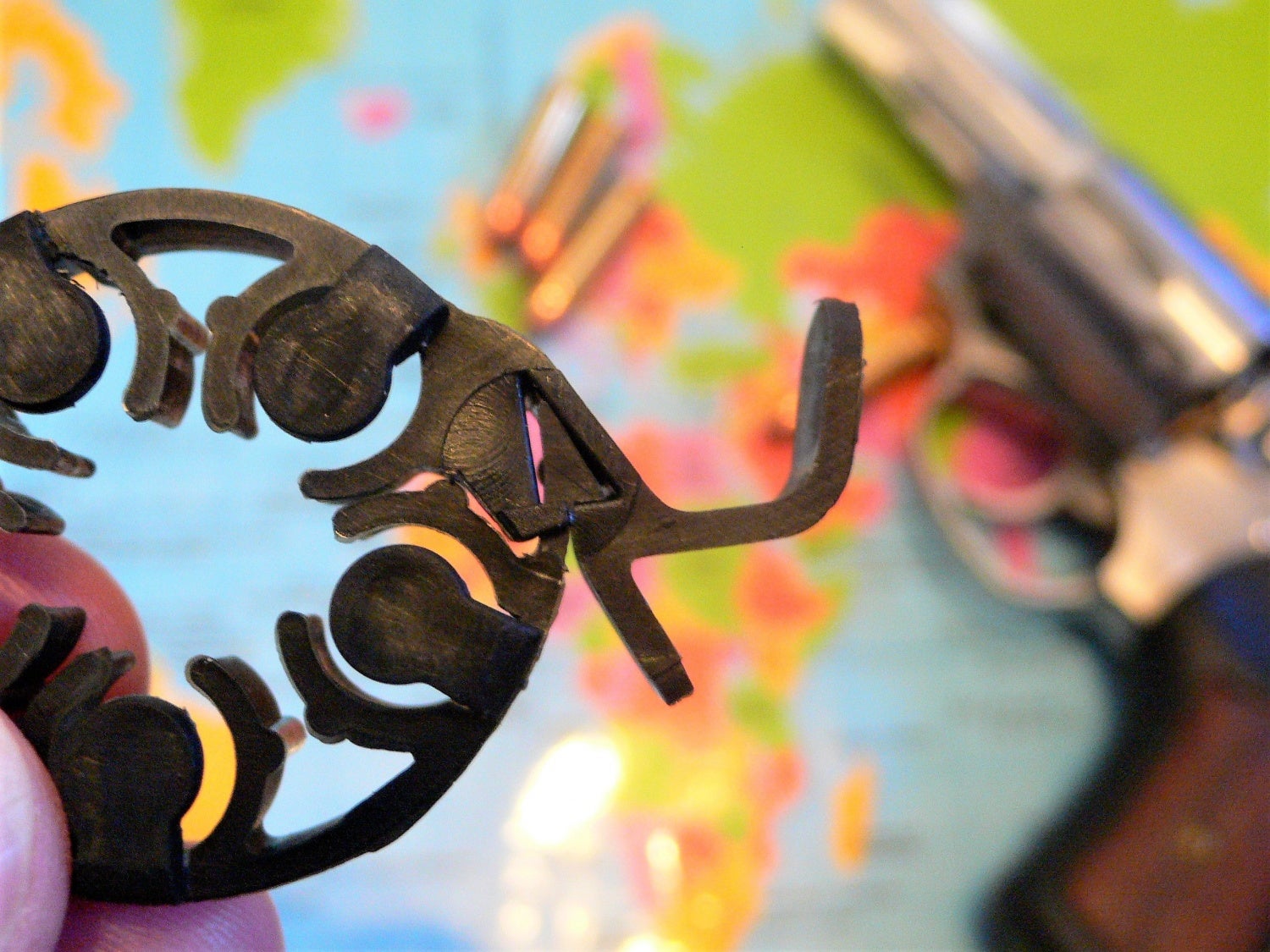
Ripcord locking retention tabs above and below the locking triangle.
I had also been curious about how well the Ripcord would work being carried in a “split six” position on my belt. I put the 5-shot loader on my belt with two cartridges on the inside of my belt and the rounds stayed in the loader each time I pulled it off my belt. The 6-shot version did just fine as well with no issues. The cartridge rims were secured well with the Ripcord locked. It wasn’t very comfortable against my skin since I’ve still got some fat to trim off, but if I tucked my undershirt in and let my outer shirt hang, they stayed concealed.
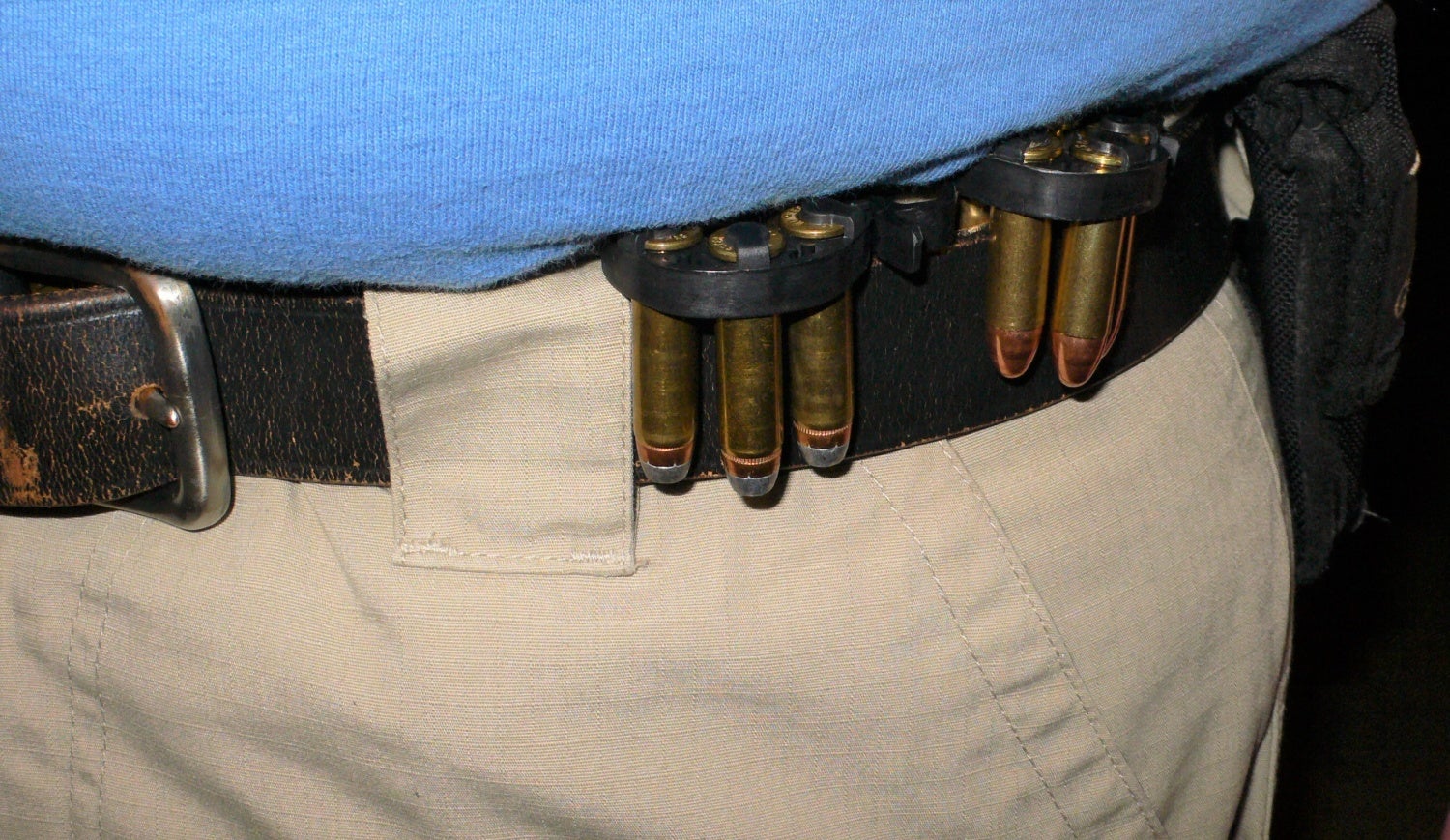
Ripcord being kept in a “split-six” configuration. Both the 5 and 6-shot versions shown on the author’s belt.
The loaded Ripcord Speedloader is flexible enough to be pushed and pulled using the thumb and first two fingers while loading, similar to giving someone a shot with a syringe. When locked in its circular position, it holds the cartridges in basic alignment with the revolver’s chambers, but the flexibility doesn’t allow for a consistent shape after having been in a pocket. It does take practice, but it also gets easier. I found the 6-shot model to be much smoother and quicker to align and charge the chambers. I believe the spacing allows for more flexibility between the individual cartridge clips compared to the tighter 5-shot model.
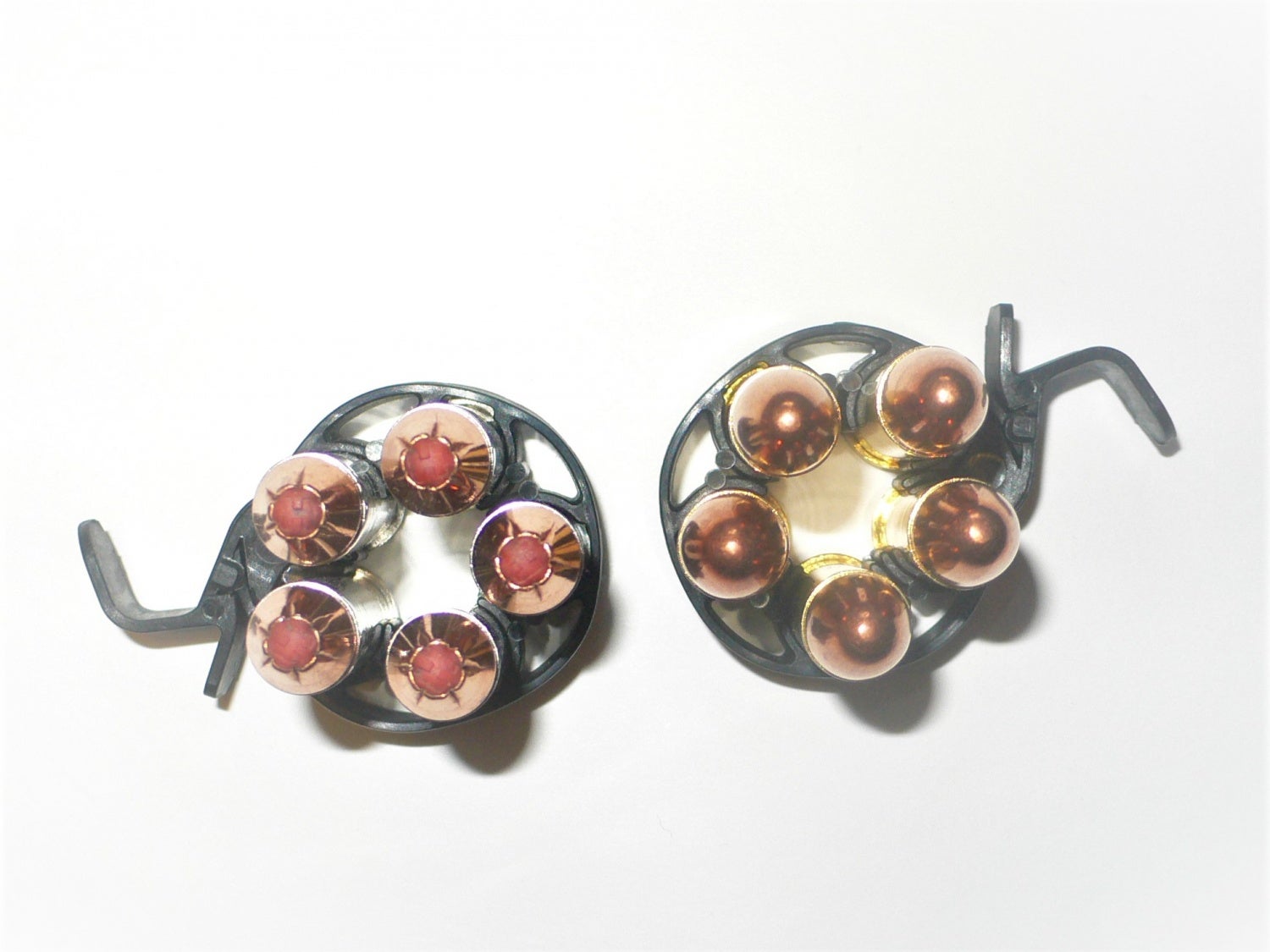
Ripcord’s asymmetrical shape after being in a pocket.
One-handed reloads were naturally slower, but not difficult (in the sense that I was voluntarily not using both hands, in the case of being forced to use one hand due to injury, “not difficult” may not apply). Using only my left hand with the cylinder open, I put the barrel of a S&W 36 down into the shoe I was wearing. I used the heel of my hand to steady the gun’s grip while I pulled the Ripcord’s tab with my fingers. The cylinder was free to rotate and the cartridges dropped in one by one as the speedloader was pulled away. While using only my right hand, I used the back of my hand to stabilize the grip against my leg and pulled the tab with my fingers.
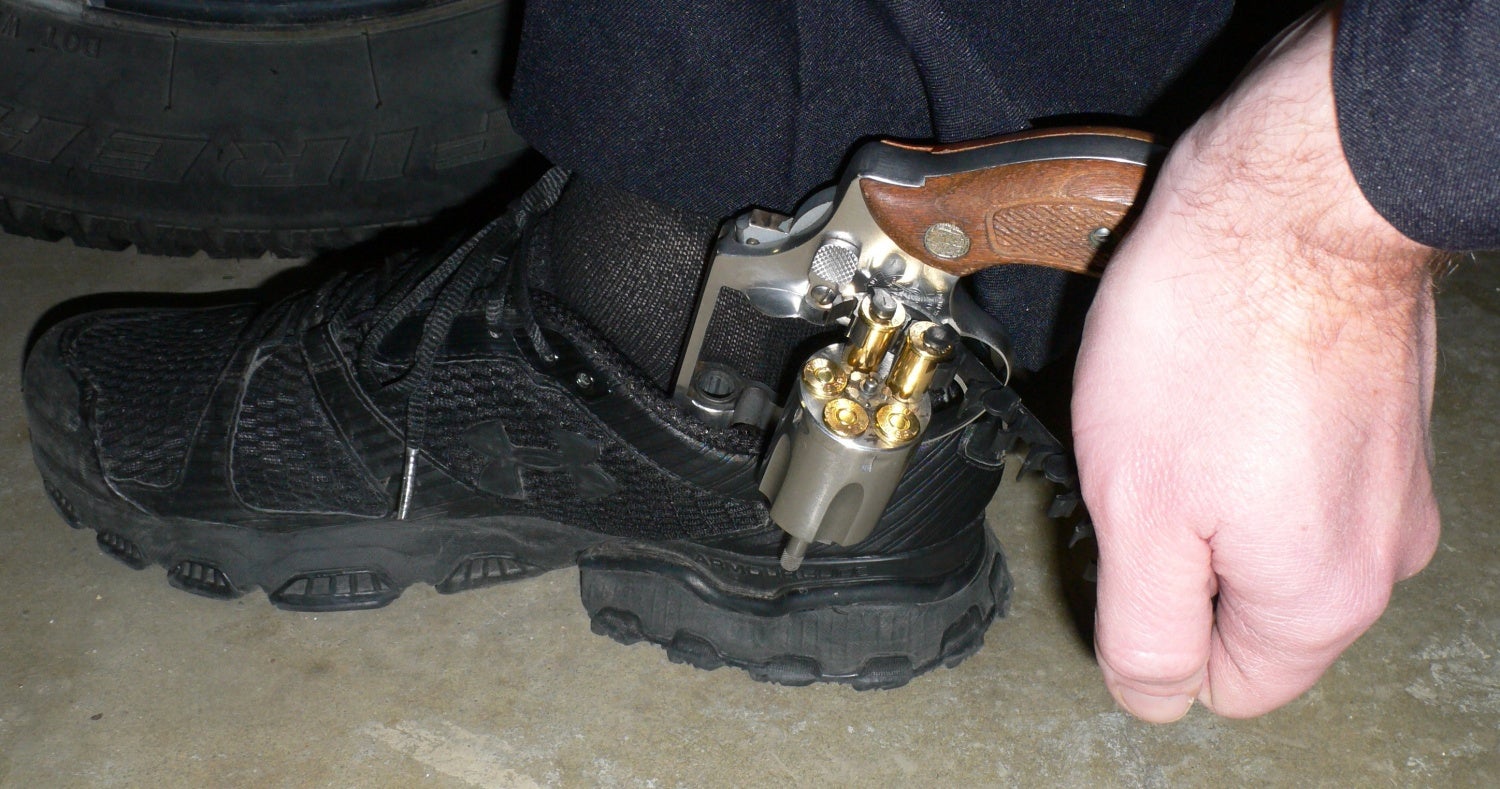
Left hand only Ripcord reload.
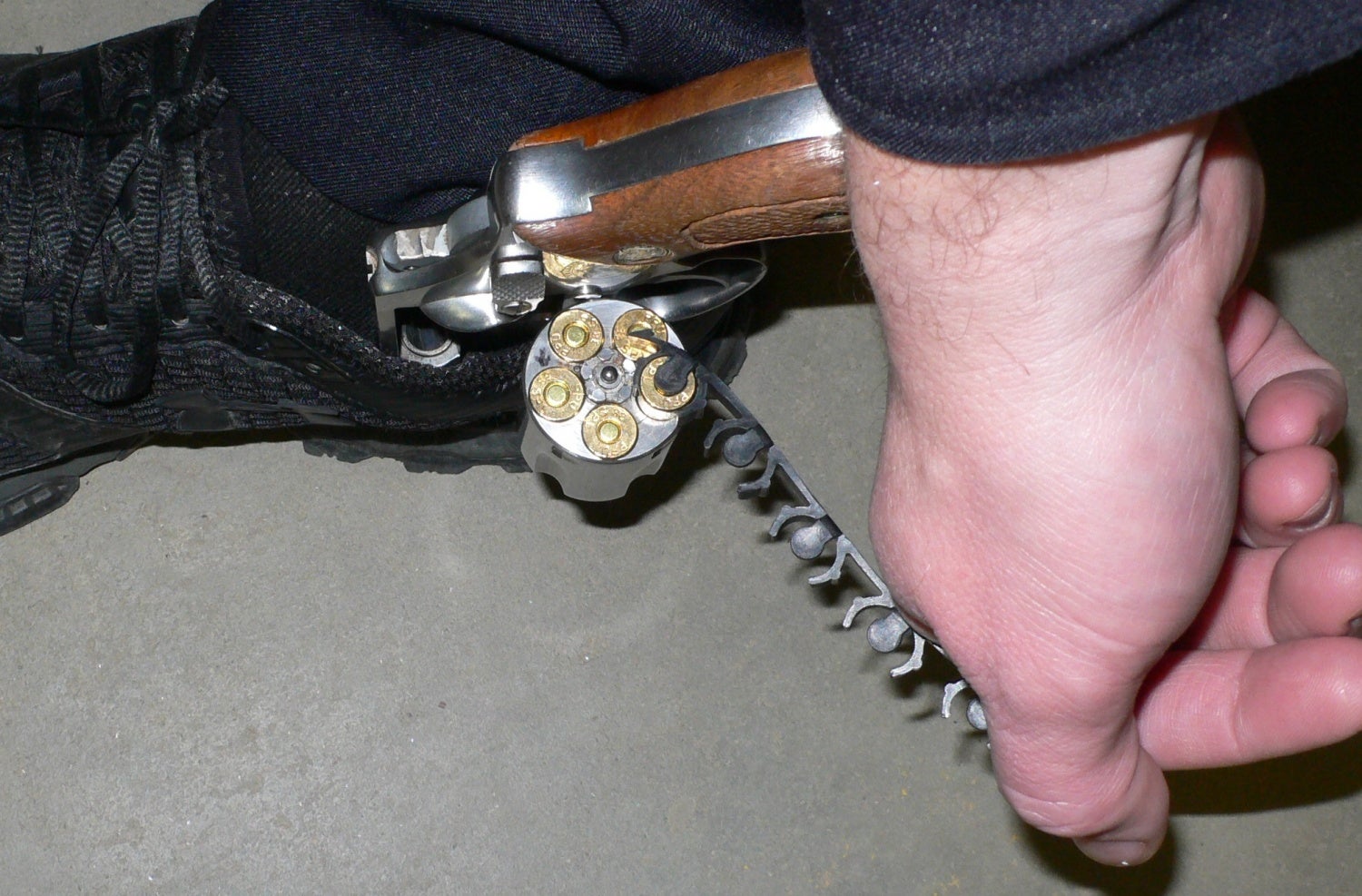
Right hand only Ripcord reload.
With those curiosities explored, I headed for the range. It was a sunny day, but by the time we made it to the range, the shadows were growing long and the temp was dropping from a blistering 20 degrees (F). Thus, in a sense, you get a bonus aspect to this review because I got to test the Ripcord in below freezing temperatures. I had primarily used the 5-shot Ripcord I marked “1” and I estimated that before I hit the shooting range I’d done about 50 pulls with it. I started off with one round in the cylinder and had one Ripcord on my belt, split-six style, with a fleece pullover concealing it. Using my Ruger SP101, I shot the one round, opened the cylinder and ejected the casing, then did a reload from my belt. The fastest I was able to get during that range session was six seconds. I consistently got six second reloads from my pocket as well.
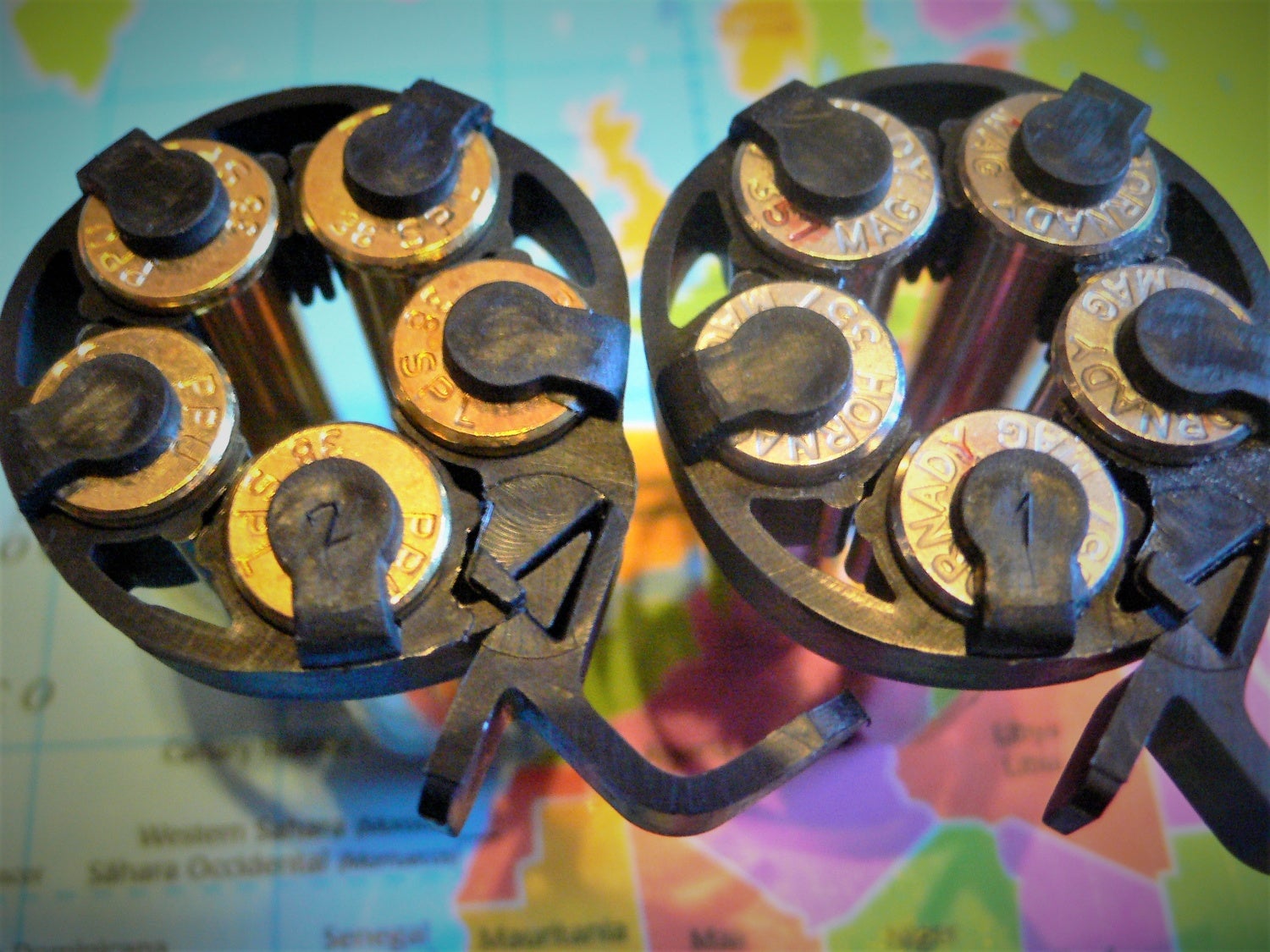
Consider marking each Ripcord on the primer covers. This could help in identifying any potential issues over time. The author used a pocket knife.
I then switched to using an old double speedloader pouch. In this case, I loaded up both 5-shot Ripcords and intended to shoot 11 rounds. Up to that point, #1 had done great in the cold and snow and functioned flawlessly. I actually hadn’t used #2 yet. When it came to loading the #2, I was unable to get two of the five rounds loaded. One round fell out during the pull, while the other stayed attached to the Ripcord. All of this confirmed what Chason Yaxley, one of the Ripcord’s inventors said about needing to break-in each one, which only takes about ten pulls. It’s also possible that I didn’t have the cartridges deep enough into the chambers before the rip.
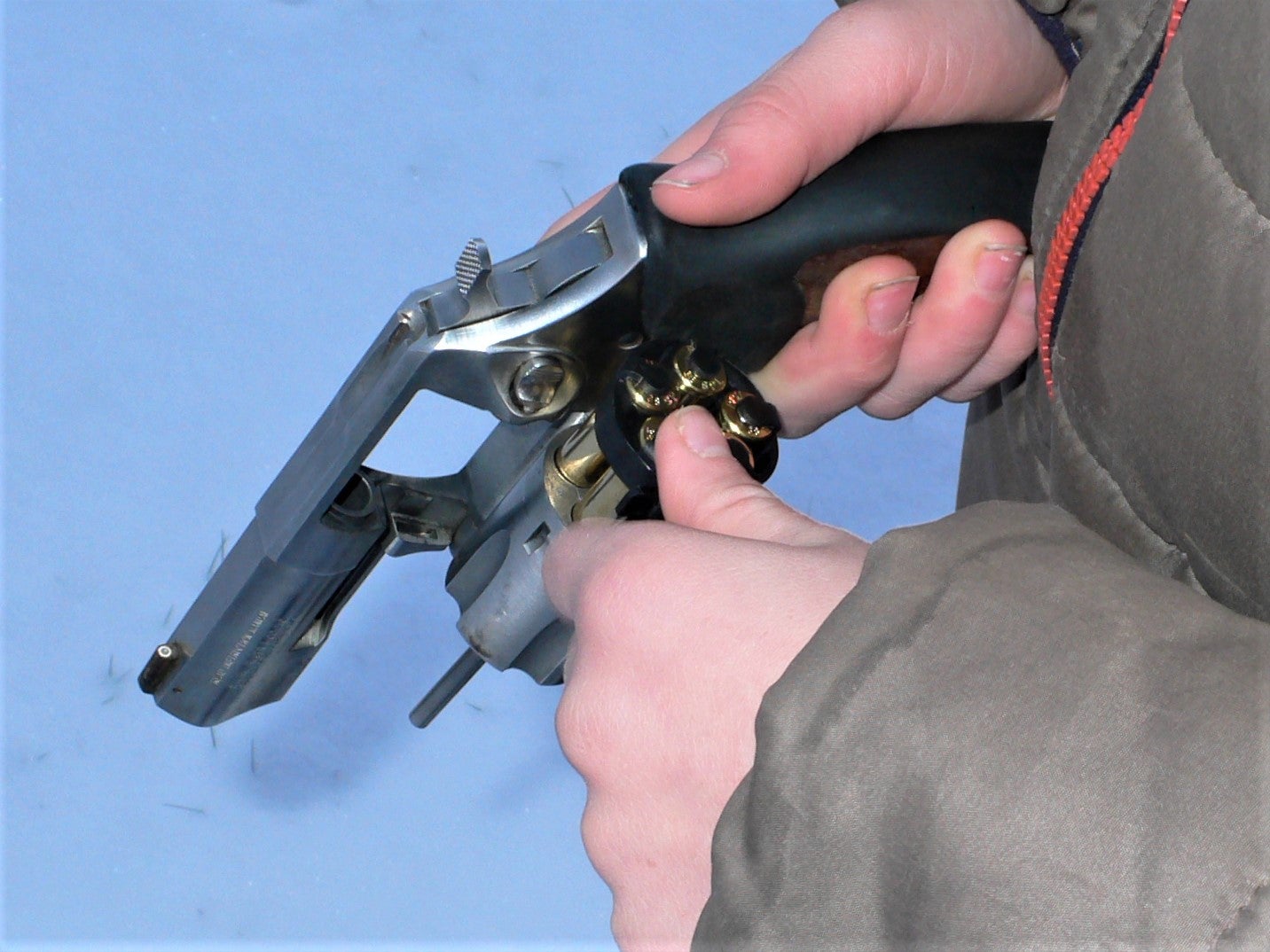
Author’s son reloading using the Ripcord

The broken-in Ripcord functioned perfectly in cold temps and snow.
Other than my non-scientific test of adverse force against the crane, the Ripcord was more versatile than I had expected. It seemed durable, yet flexible enough. The cost is very affordable and the slim design make for easy concealment in pockets or half tucked into a belt. CK Tactical mentioned that they were working on developing a pouch system for the Ripcord and I’m curious what they will come up with. I know people have been trying them out since the Ripcord was released. For those of you that have tried them, what do you think?
CK Tactical’s 5 and 6-shot Ripcord Speedloaders are available at gogeardirect.com. You can also follow CK Tactical on Instagram.
 Your Privacy Choices
Your Privacy Choices
